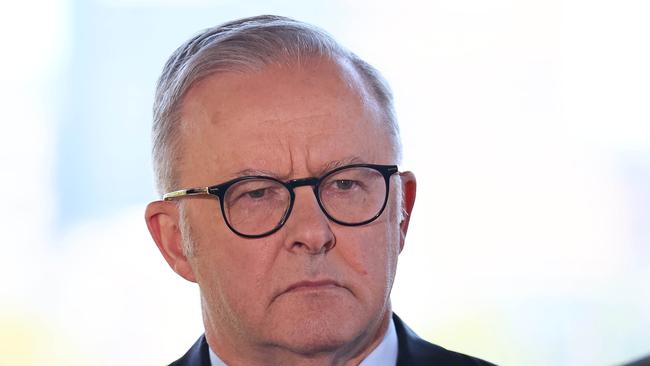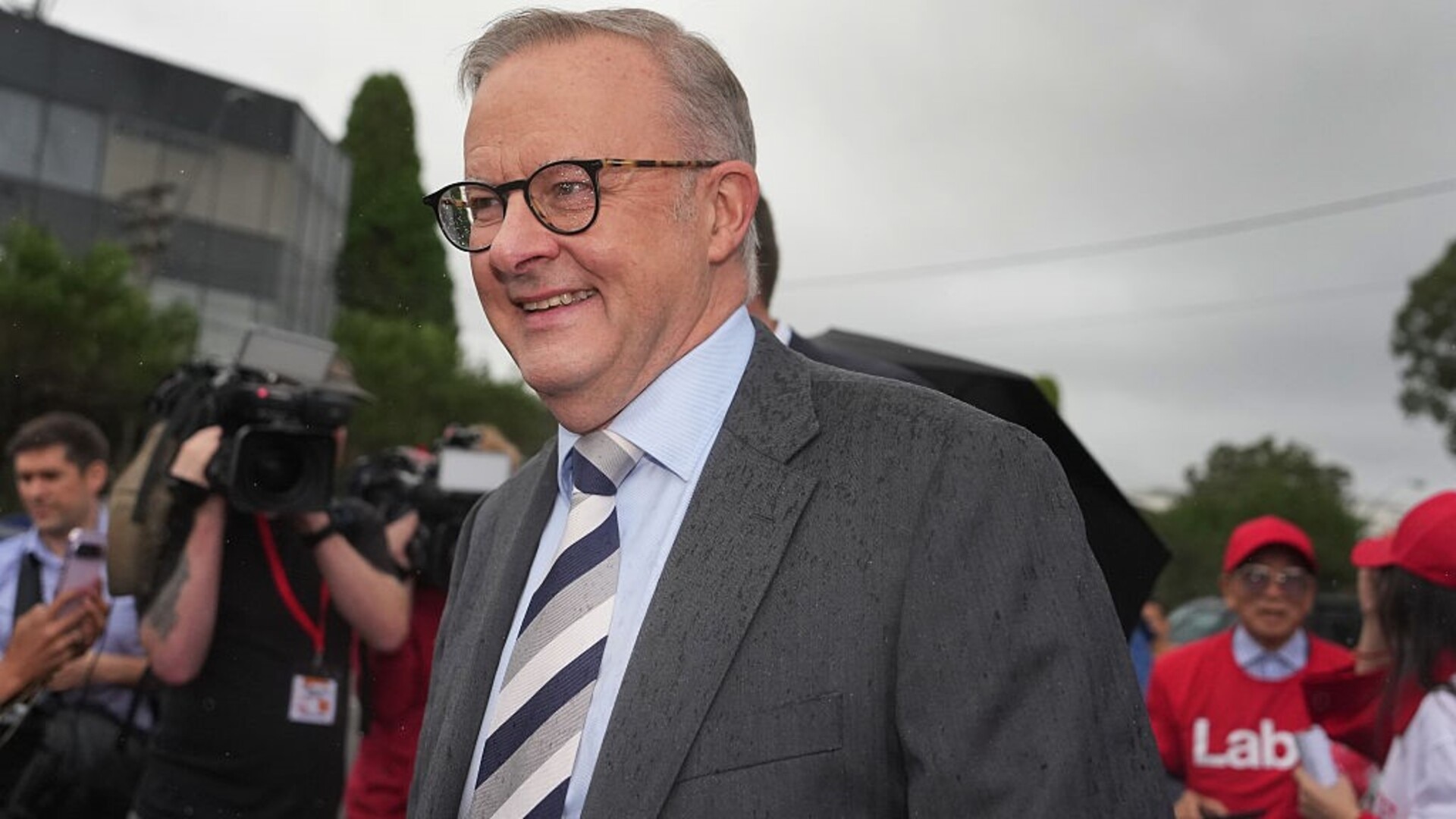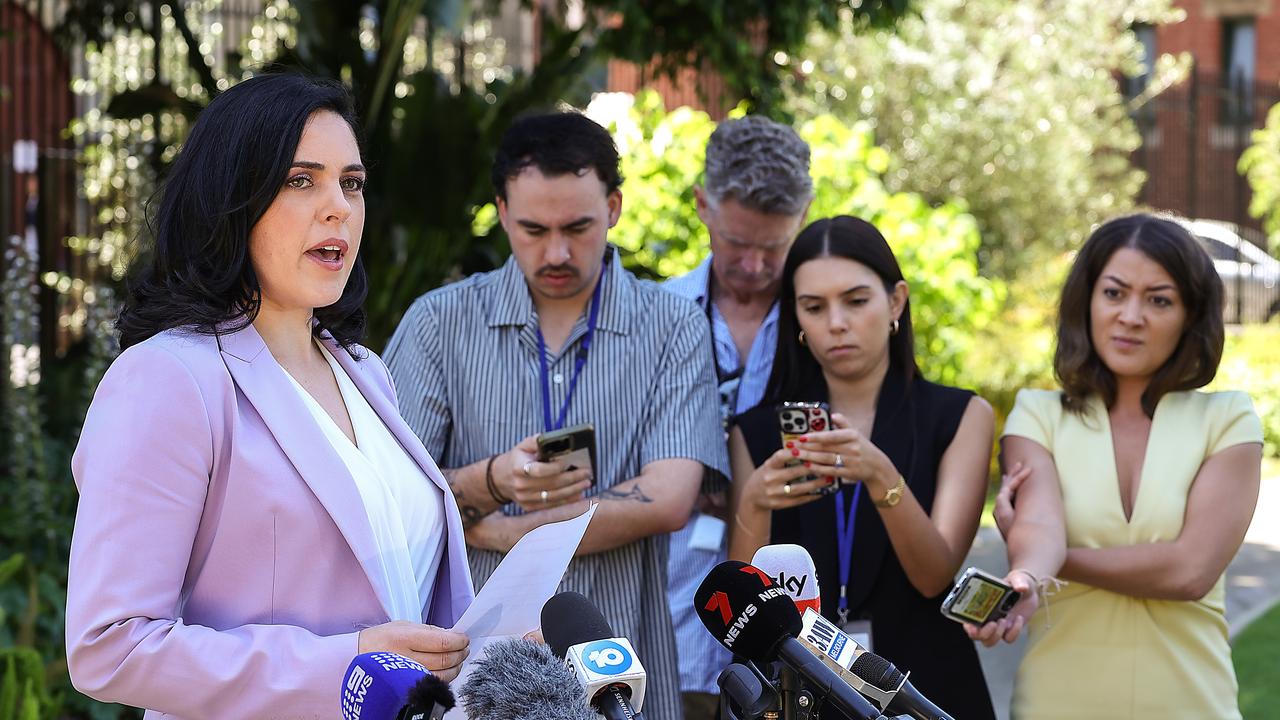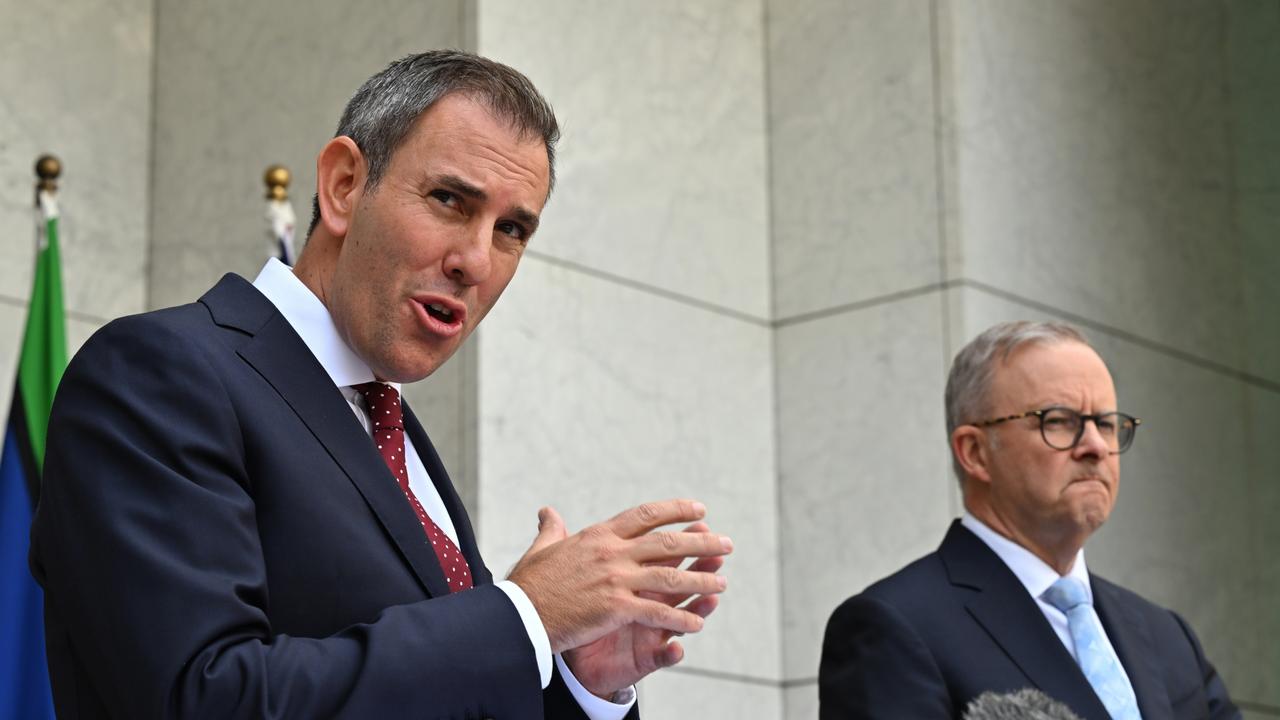Carbon emissions go up, hydro power down, data shows
Australia’s carbon footprint rose slightly last year driven by a 2.2 per cent increase in the electricity sector, complicating Labor’s plan of adopting a new and more ambitious 2035 target to reduce emissions.

Anthony Albanese’s 2030 target to reduce emissions is on life support after new data showed Australia’s carbon footprint rose slightly last year driven by a 2.2 per cent increase in the electricity sector.
Energy experts declared the Albanese government was set to fail its international commitment to lower emissions by 43 per cent of 2005 levels by the end of the decade, complicating Labor’s plan of adopting a new and more ambitious 2035 target ahead of the UN Climate Change Conference in November.
Figures released by the Climate Change Department show carbon dioxide emissions rose by 0.05 per cent in 2024 to 446.4 million tonnes, equivalent to 27 per cent lower than in 2005.
Energy expert Bruce Mountain said he did not think there was a chance the Albanese government would meet its 2030 commitment while MST Marquee analyst Saul Kavonic said the delay in the renewables rollout made the target “impossible to meet”.
Climate Change and Energy Minister Chris Bowen said: “We are on track to reach our 2030 targets.”

The department predicted that its next report would show emissions in the year to March had dropped by 1.2 per cent, after a 0.8 per cent reduction in the three months to December.
Mr Bowen said the reduction of emissions in the December quarter was driven by renewables hitting a record 46 per cent of energy generation.
“We’re turning around a decade of denial and delay, by setting serious climate targets in law and delivering the policy certainty to industry to bring down emissions,” Mr Bowen said. “Industrial emissions are now lower than they were during Covid, even as the economy has recovered. We are on track to reach our 2030 targets – but we need to keep going and ensuring we’re delivering downwards pressure on emissions across the economy.”
Despite Labor going all in on renewables as part of its climate change agenda, emissions in the electricity sector increased in 2024 with coal and gas needing to step up due to a lack of water limiting hydro generation in Tasmania.
The safeguard mechanism drove a 5 per cent reduction in industrial emissions through the year, while the carbon footprint of the agriculture sector fell by 2 per cent “mainly due to decreased crop production”.
Emissions in the transport sector rose by 1.9 per cent, prompting Mr Bowen to talk up the need for his contentious vehicle emissions standards that car suppliers warn are too ambitious. “More choice of cheaper-to-run cars will help drive down emissions, as well as being good for drivers’ wallets,” Mr Bowen said.
Labor is expected to outline a 2035 target of at least a 65 per cent reduction and is coming under pressure to go above 70 per cent, as the Prime Minister aims to win a bid to co-host the UN COP31 climate change summit with Pacific nations next year.
New opposition energy and emissions reduction spokesman Dan Tehan said the figures showed “once again what a mess Chris Bowen was making of the energy portfolio”.
“Despite all his bluster, all we are seeing under him is electricity prices go up, gas prices go up, and emissions go up,” Mr Tehan said.
“He seriously has to have a good hard look at himself and what his policies are doing to the long term future of this nation.”
Greens leader Larissa Waters said emissions were “still going up” and were higher under Anthony Albanese than under Scott Morrison.
The drop in emissions under the Morrison government was largely due to a halt in economic activity during the Covid pandemic.
Senator Waters said: “Just this week, Labor approved the climate-wrecking North West Shelf dirty gas extension to 2070. Two climate tests so far and Labor’s failed both. During the last term of parliament, Labor approved over 30 new coal and gas projects, and it doesn’t look like they’re slowing down any time soon.”
Only a quarter of the large-scale renewable energy generation required to hit Labor’s 2030 target in the first three months of 2025 progressed to a firm capital commitment, new data showed this week, sparking a warning that the pace of investment must quickly accelerate to hit the end of decade goal.
Mr Kavonic said the 43 per cent reduction target relied on Labor meeting its goal to generate 82 per cent of electricity from renewables by 2030.
“It is impossible to meet the 82 per cent renewable energy target due to delays in environmental approvals for the necessary renewables infrastructure upgrades,” he said. “Labor’s increasingly burdensome approvals policies are slowing down renewables growth.”
Mr Mountain, director of the Victoria Energy Policy Sector, said the 27 per cent reduction in emissions since 2005 was largely based on land-use changes which included less deforestation.
“I don’t think there is a chance Australia will get to 43 per cent below 2005 by 2030,” Mr Mountain said. “It needs to increase the rate of expansion of clean energy by five times the rate they did over the last term of government … and that just does not seem likely at all.”
Grattan Institute director of energy Tony Wood said: “This is the period where it is going to get harder. If we can keep electricity prices more or less where they are now, then I think we are doing okay.”
Consultancy firm Wood Mackenzie said the path to achieve a steep cut by the end of the decade looked challenging given electricity emissions rose on an annual basis last year.



To join the conversation, please log in. Don't have an account? Register
Join the conversation, you are commenting as Logout